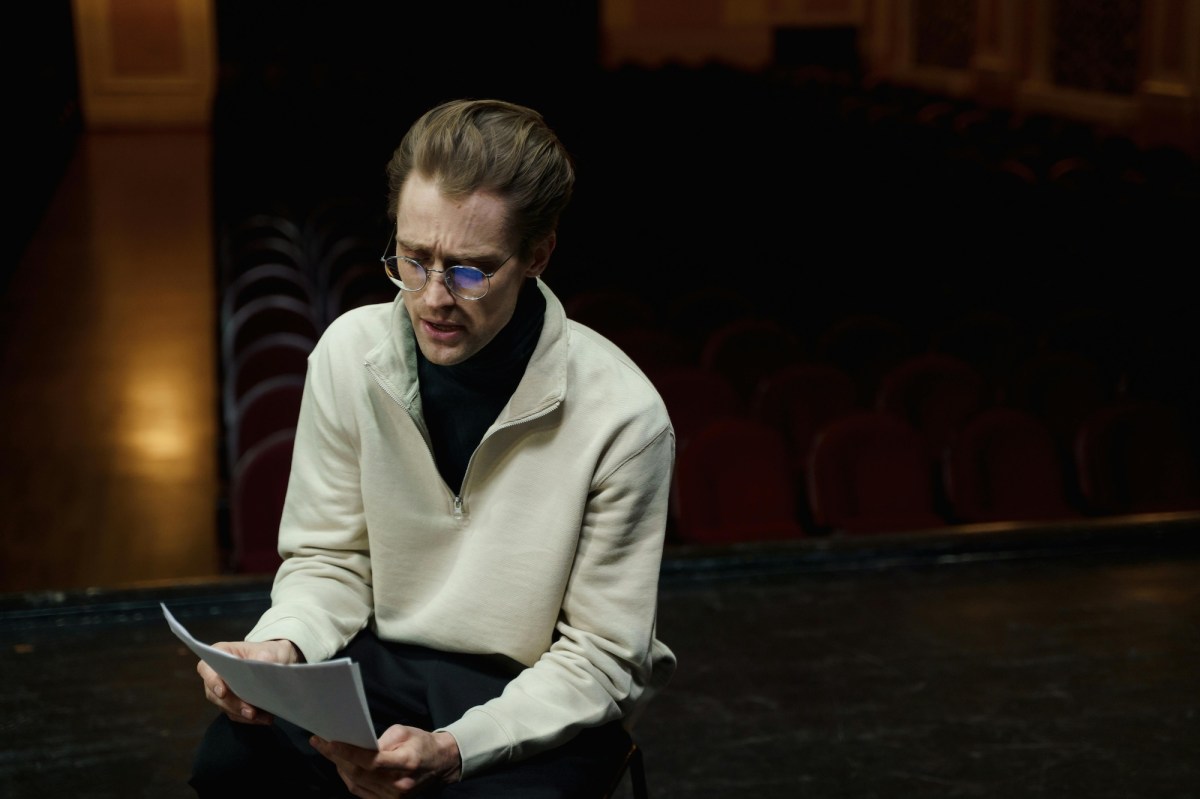Monologue performance is a technically demanding but deeply rewarding form of theatre. Monologues are the purest form of storytelling in which an actor can engage.
Before I was a drama teacher and researcher, I was an actor on stage and television in Australia and in the UK.
As an actor, you are always having to prepare monologues as audition pieces. Here are some principles and techniques to help you with this process, to allow you to draw in your audience and strengthen your artistic expression.
Choosing your monologue
Successful characterisation in monologue acting depends on ‘casting’ yourself well. This means choosing a text and a character that resonate with your own persona and emotional range.
Even if you decide you want to play someone with a completely different age, gender and life experience to your own, there should be something about this character that speaks to you: maybe it’s their sense of vulnerability, their love of life, their rage at unfair circumstances. The more you can relate to some specific aspect of this person, the easier it will be to access the emotional range to play them.
If you decide on a character from a well-known play, make sure you have an understanding of the whole text the piece comes from.
Finding the personality
As an actor, you should have a good grasp of your character’s personality and attitudes to life.
Look for clues in the monologue or the overall play that tell you something about this person’s inner psychology. Do they always agree with everyone, or are they always complaining? How do they talk about themselves, how do they talk about other people?
In a well-written play, dialogue is always filled with signals like these that actors rely on when creating characters.

Another useful approach is to develop a detailed backstory for the role you are playing. Performers often use journalling or visualisation to deepen their emotional connection with the person they are depicting.
Taking time to imagine these key ‘memories’ can provide an emotional anchor when you want to access different parts of their personality. The audience will never know these choices you have made, but you will carry them within you, and they can add depth and dimension to your portrayal.
Making the character physical
Along with analysing your character’s psychology and motivations, spend time working on their physicality.
How does this person move through the world? Are they a daydreaming wanderer, or a short sharp stepper who is always in a hurry? Do they close themselves off from the world with hunched shoulders, or do they stand tall and project themselves outward?
These qualities may change throughout the monologue as your character moves through different thoughts and memories.
Making stage direction choices for a monologue can be one of the most challenging things to get right. Simple things such as walking downstage to talk directly to your audience, or sitting down at a particular moment, can add effective dynamics to your performance. But any choices you make must come from an inner impulse within your character. Movement needs to be motivated by some kind of shift in their thoughts.
Breaking down the monologue
To identify these shifts, break down your script into key ‘beats’. These are the moments in a text where your character starts talking about something new. You can use these to create shifts in movement, tone and pace.
Incorporating different beats into your piece is vital for keeping your audience’s interest. Every monologue should take the audience on a journey through a character’s inner life. Ensuring this journey includes some surprises or effective use of dramatic tension will help make your piece work as a solo performance.

Sit down with a pencil and mark down any point in the script where you think the character starts thinking or talking about something new. Once you have all these internal shifts marked out, decide if any of these could be played with a contrasting emotional tone and pace to create dramatic effect.
Who are you talking to?
Performing a piece on your own can be daunting, as there are no other characters to respond to or generate reactions from. Understanding who your character is speaking to during the monologue means you can use your audience as an additional ‘actor’. Are they an ally or an enemy? Or are these private thoughts, with the audience as a witness to your inner mind?
Clarifying this relationship can help you make clearer choices in how you deliver your lines.
Give yourself time
There are many creative decisions to be made when preparing a monologue performance. Make sure to give yourself enough time to make these decisions and to learn your lines by heart.
Experiment with lots of different choices when you are starting out and rehearse your piece as often as possible. This will help reduce nerves when it comes to your final performance, as it’s difficult to focus on acting when your mind is racing trying to remember what to say next.
Once the hard work of preparation, experimentation and creative expression is done, there is no better feeling than nailing a solo performance!
Natasha Beaumont, Lecturer in Creative Arts, School of Education and Social Work, University of Sydney.
This article is republished from The Conversation under a Creative Commons licence. Read the original article.





